Barbell Weight, Types and Sizes
Delve into the world of weightlifting barbells, exploring types and the associated weights.
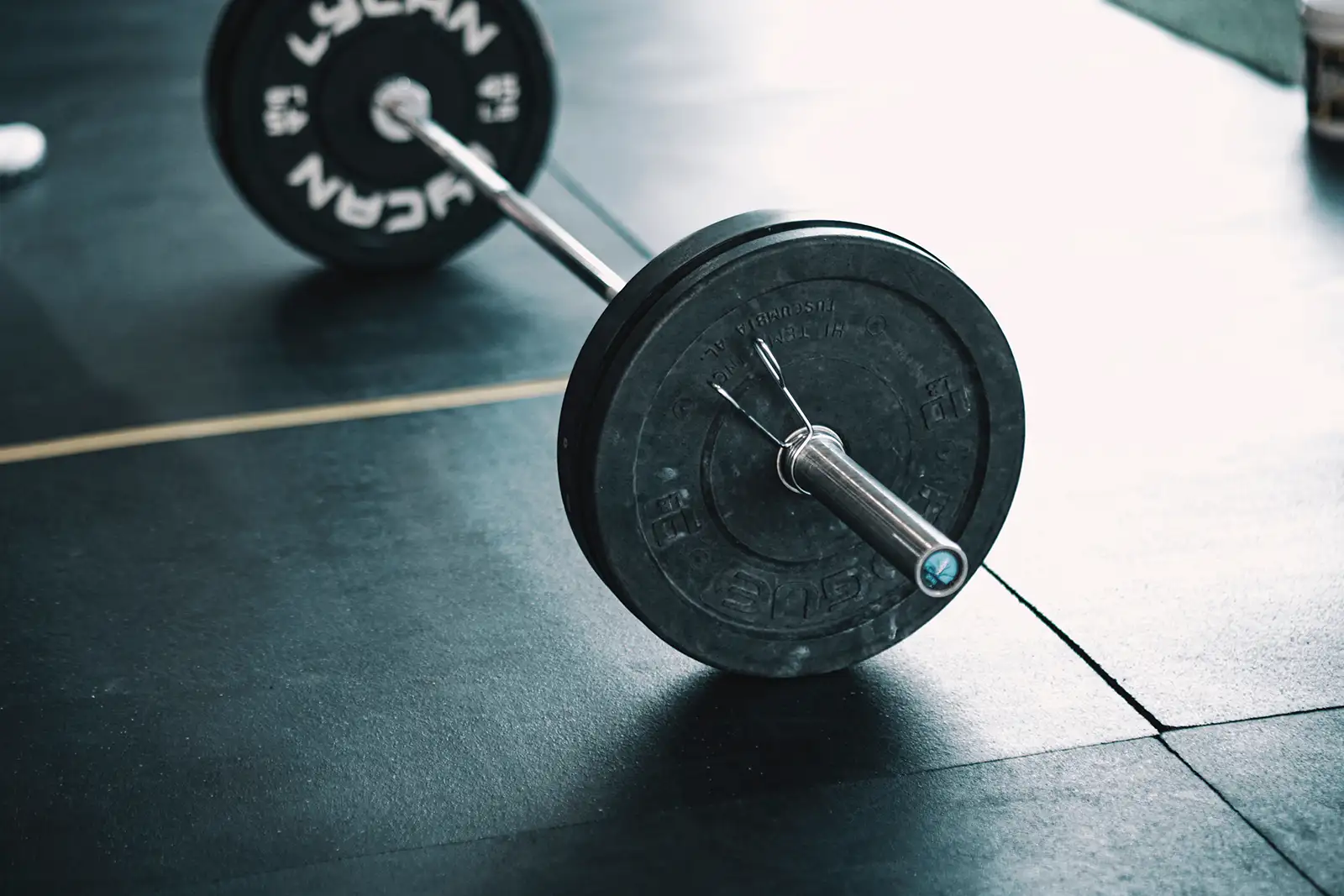
Weightlifting is a physically demanding and rewarding pursuit that requires a diverse range of equipment. Among the essential tools of the trade, the barbell stands as an iconic and versatile piece that has been integral to strength training for centuries.
What is a barbell?
A barbell is a piece of weightlifting equipment that consists of a long, straight metal bar with rotating sleeves at each end. It is a fundamental tool used in various strength training exercises and sports, such as weightlifting, powerlifting, bodybuilding, and general fitness workouts. The barbell's versatility makes it a cornerstone of many fitness routines, offering the ability to perform a wide range of exercises that target different muscle groups.
There are several types of weightlifting barbells, each designed with specific purposes in mind, and they come in various weights to cater to different fitness goals. In this article, we will explore the following barbell types and the associated weights.
- Olympic Barbell - 20kg/44lb
- EZ Curl Bar - 10kg/22lb
- Powerlifting Barbell - 25kg/55lb
- Multi-Purpose Barbell - 20kg/44lb
- Safety Squat Bar - 20kg/44lb
- Deadlift Barbell - 20kg/44lb
- Women's Barbell - 15kg/33lb
Olympic Barbell
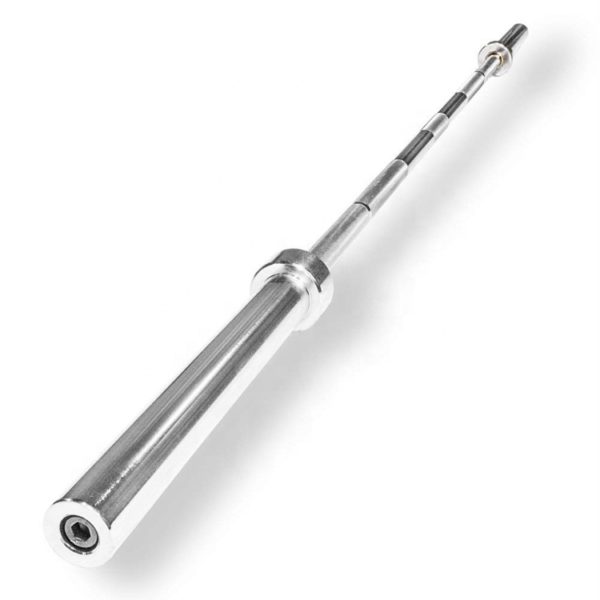
Olympic weightlifting demands precision and technique, and the Olympic barbell is specifically crafted to meet those requirements. Weighing 20 kilograms (44 pounds) for men and 15 kilograms (33 pounds) for women, this barbell is slightly different from the standard barbell. It features rotating sleeves that allow the weight plates to spin freely, reducing the stress on the lifter's wrists and allowing for smoother lifts during movements like the snatch and clean and jerk.
Engineered for Olympic weightlifting and technical lifts like the snatch and clean and jerk, emphasizing technique, speed, and explosiveness.
- Weight: Standard weight is 20 kilograms (44 pounds) for men and 15 kilograms (33 pounds) for women.
- Bar Length: Approximately 7.2 feet (2.2 meters) long, providing ample space for hand positioning during lifts.
- Diameter: Typically measures 28mm in diameter, offering a balance between grip and barbell stability.
- Sleeve Rotation: Designed with rotating sleeves, allowing weight plates to spin freely for smoother lifts and reduced stress on wrists.
- Sleeve Length: Each sleeve is around 16.4 inches (41.5 cm) in length to accommodate Olympic-sized weight plates.
- Load Capacity: Can generally handle heavy loads up to 1500 pounds (680 kilograms) or more, making it suitable for advanced lifters.
Barbell We Recommended
EZ Curl Bar
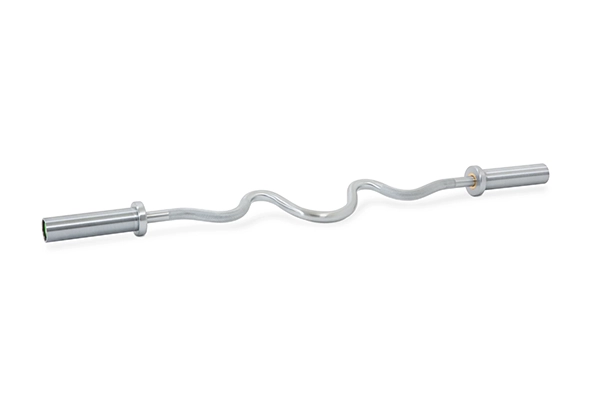
The EZ Curl bar offers a unique grip configuration that caters to arm-focused workouts, providing a comfortable and efficient way to target the biceps, triceps, and forearms. Its versatility and ergonomic design make it a valuable addition to any fitness routine, whether you're working out in a commercial gym or the comfort of your own home.
Designed primarily for bicep and forearm exercises with a distinct "W" or zigzag shape, offering a more ergonomic grip compared to straight barbells.
- Weight: Typically weighs around 10 kilograms (22 pounds), providing a manageable load for targeted arm exercises.
- Bar Length: Generally measures around 4 to 4.5 feet (1.2 to 1.4 meters) in length, offering a compact and focused range of motion.
- Diameter: Features a 25mm to 28mm diameter, providing a comfortable grip for various hand sizes.
- Bend Design: Characterized by its distinct "W" or zigzag shape, which allows for multiple grip positions and reduces strain on the wrists.
- Load Capacity: Can handle moderate loads, usually up to 150-200 pounds (68-91 kilograms), suitable for isolation exercises.
Curl Bar We Recommended
Powerlifting Barbell

Designed for powerlifting competitions, the powerlifting barbell is a heavy-duty piece of equipment built to handle massive weights. It typically weighs 25 kilograms (55 pounds) for both men and women. This barbell is stiffer and more rigid compared to the Olympic barbell, which helps transfer power more efficiently during movements like the squat, bench press, and deadlift. The knurling on the powerlifting barbell is also more aggressive, providing a better grip for maximal lifts.
- Weight: Typically weighs 25 kilograms (55 pounds) for both men and women.
- Bar Length: Approximately 7.2 feet (2.2 meters) long, providing sufficient space for gripping and lifting.
- Diameter: Generally has a diameter of 29mm to 32mm, offering a sturdier grip for heavy lifts.
- Knurling: Features an aggressive knurling pattern to provide a secure grip, especially important for heavy loads.
- Load Capacity: Designed to handle extremely heavy weights, often exceeding 1,000 pounds (450 kilograms) or more.
- Center Knurling: Many powerlifting barbells have center knurling to provide additional grip and stability during squats.
- Sleeve Rotation: Typically has less sleeve rotation compared to an Olympic barbell, as the focus is on stability rather than dynamic movements.
- Sleeve Length: Each sleeve is usually around 16 inches (40.6 cm) long to accommodate powerlifting-sized weight plates.
Powerlifting Bar We Recommended
Multi-Purpose Barbell
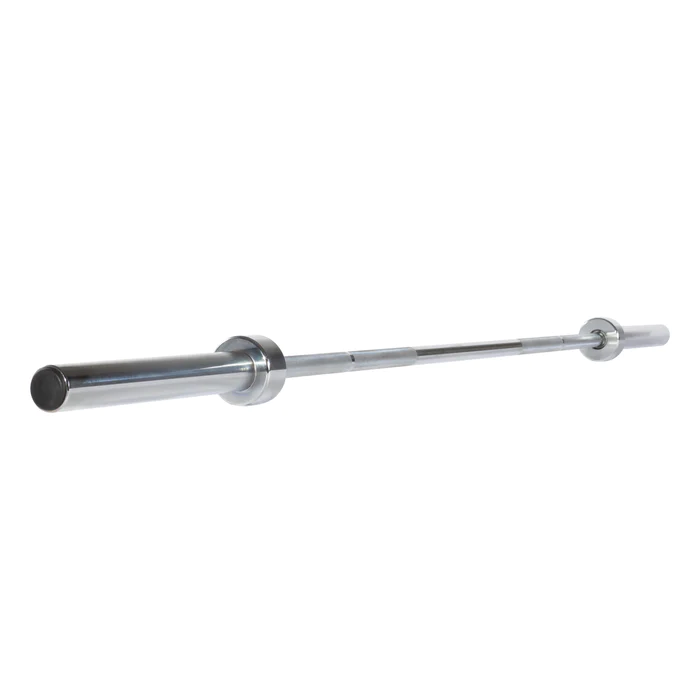
Suited for a variety of exercises, including squats, deadlifts, bench presses, Olympic lifts, rows, and more. Its adaptability, moderate knurling, and balanced specifications make it a go-to choice for those looking to diversify their workouts and get the most out of their training sessions.
- Weight: Typically weighs 20 kilograms (44 pounds) for men and 15 kilograms (33 pounds) for women.
- Bar Length: Approximately 7.2 feet (2.2 meters) long, providing ample space for various exercises and hand placements.
- Diameter: Generally has a diameter of 28mm, offering a balanced grip suitable for a wide range of exercises.
- Knurling: Features moderate knurling that strikes a balance between providing a secure grip and avoiding excessive abrasion.
- Load Capacity: Designed to handle a wide range of weights, suitable for both strength training and Olympic lifts.
- Material: Crafted from durable steel to withstand the demands of various exercises and lifting styles.
- Sleeve Rotation: Typically has rotating sleeves to allow for smoother Olympic-style lifts like snatches and clean and jerks.
- Sleeve Length: Each sleeve is usually around 16 inches (40.6 cm) in length to accommodate standard weight plates.
- Center Knurling: Often absent or lighter than that of a powerlifting barbell, ensuring comfort during various exercises.
Multi-Purpose Bar We Recommended
Trap Bar
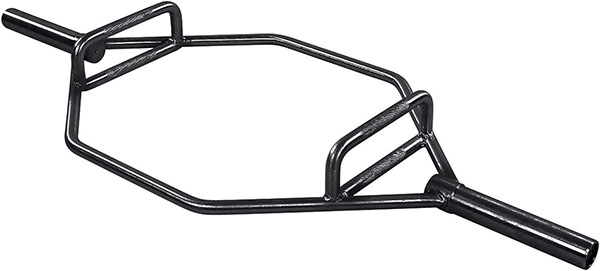
The trap bar, also known as a hex bar or hexagonal barbell, is a specialized piece of exercise equipment used for weightlifting and strength training. It's shaped like a hexagon with open sides, allowing you to step into the barbell rather than having it in front of you like a traditional straight barbell. This unique design offers several advantages and variations in exercises compared to conventional barbells. Here are some key stats and descriptions of the trap bar:
- Length: The length of a standard trap bar is usually around 5 to 6 feet (approximately 152 to 183 cm). This length allows for enough space to load weight plates while still providing room for your body when performing exercises like deadlifts and squats.
- Width: The width of the trap bar, from one side to the other, can also vary. It's commonly around 24 to 26 inches (approximately 61 to 66 cm). This width allows for comfortable stepping into the bar and gripping the handles.
- Handle Length: The length of the handles themselves, which you grip during exercises, can be around 10 to 12 inches (approximately 25 to 30 cm) each. This length provides sufficient space for your hands while maintaining a secure grip.
- Handle Height (for High-Handle Trap Bars): In the case of high-handle trap bars, the height of the handles from the ground is typically around 8 to 12 inches (approximately 20 to 30 cm). This elevation accommodates squats and other upright exercises.
Trap Bar We Recommended
Women's Barbell
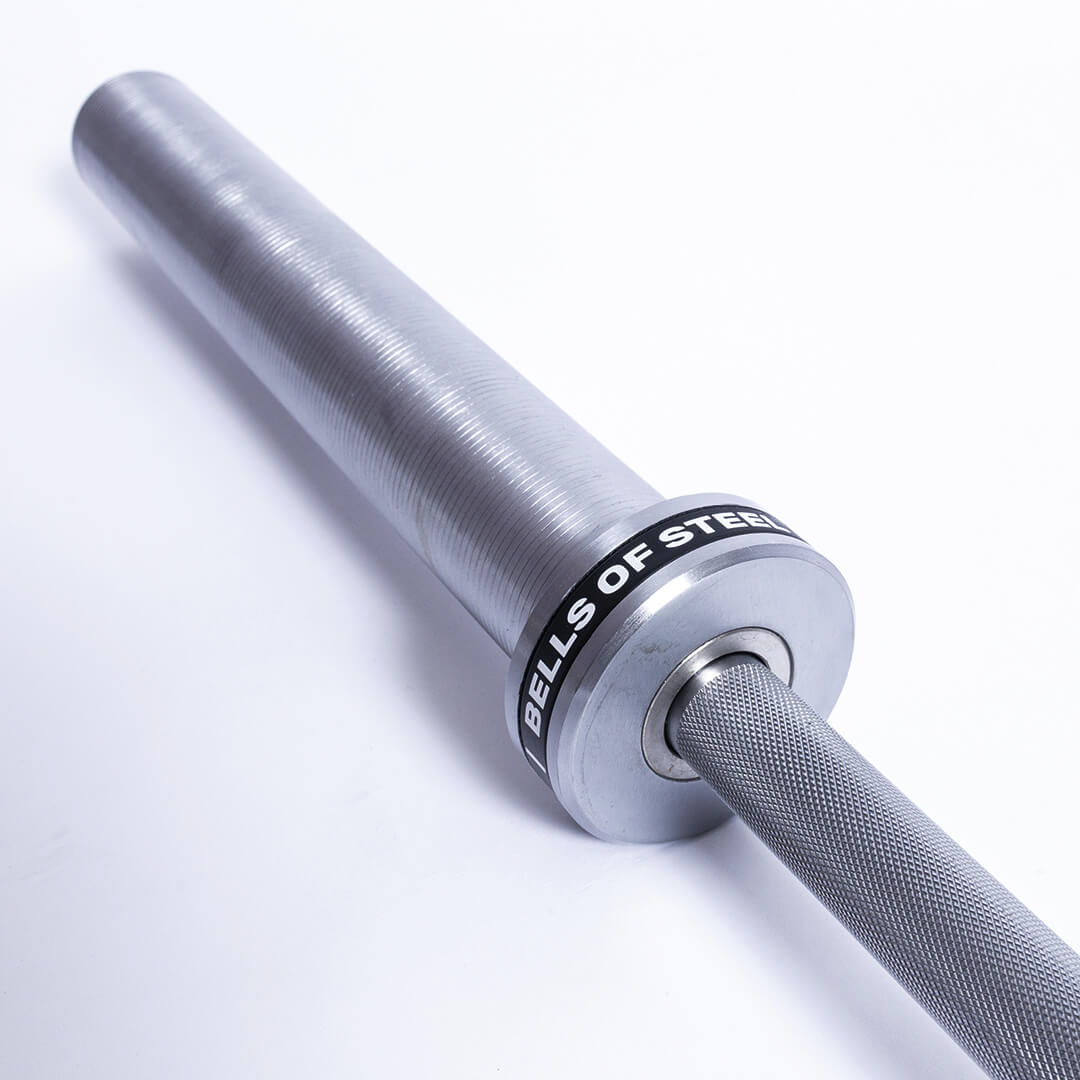
The women's barbell addresses the unique anatomical considerations of female lifters, providing a comfortable and effective tool for achieving strength and fitness goals. Its slightly lighter weight and modified specifications cater to the biomechanics of women, promoting proper form and reducing the risk of injury during weightlifting exercises.
- Weight: Typically weighs 15 kilograms (33 pounds), which is slightly lighter than the standard men's barbell weight of 20 kilograms.
- Bar Length: Approximately 7.2 feet (2.2 meters) long, offering ample space for gripping and performing a variety of exercises.
- Diameter: Usually has a diameter of 25mm to 28mm, providing a comfortable grip for smaller hands.
- Knurling: Features a moderate knurling pattern that strikes a balance between grip and comfort for female lifters.
- Load Capacity: Designed to handle around 500 pounds to 700 pounds (227 kg to 318 kg) or more.
- Material: Crafted from durable steel, ensuring it can withstand the demands of weightlifting workouts.
- Grip Marks: Often marked with dual knurl marks spaced at the standard Olympic lifting distance of 81 centimeters to indicate hand placement.
- Comfort: Designed with ergonomics in mind to accommodate the biomechanics and grip preferences of female lifters.
- Use Cases: A women's barbell can be used for a wide range of strength training exercises, including squats, deadlifts, bench presses, overhead presses, and more.
Recommended
Safety Squat Bar

A safety barbell, also known as a safety squat bar or SSB, is a specialized piece of weightlifting equipment designed to provide added comfort and safety during squatting movements. Its innovative design helps maintain proper posture and distributes the load more effectively, making it an excellent choice for lifters aiming to enhance their squatting experience while minimizing stress on their joints and muscles. The primary purpose is to offer lifters an alternative way to perform squats that minimizes stress on the shoulders, wrists, and elbows while providing stability.
- Weight: Typically weighs around 20 to 25 kilograms (44 to 55 pounds), similar to standard barbells, to ensure familiarity for lifters.
- Bar Length: Generally has a length similar to that of a standard barbell, allowing for a comfortable range of motion during squatting.
- Diameter: Often features a diameter of 32mm to 34mm, providing a sturdier grip and accommodating standard weight plates.
- Padding: Equipped with padded shoulder yokes that rest on the lifter's shoulders, reducing the pressure and discomfort that some lifters experience with a traditional barbell.
- Handles: Safety barbells have handles on the sides of the bar, allowing lifters to hold onto the barbell in a more comfortable and secure manner.
- Variations: Different safety barbells may have varying handle designs and padding thicknesses to suit individual preferences.
- Center of Gravity: The design of the safety barbell shifts the center of gravity forward slightly, which affects the lifter's posture during squats, activating the quadriceps and back muscles more.
- Benefits: Safety barbells are particularly beneficial for lifters with shoulder, wrist, or elbow issues, allowing them to continue squatting with reduced discomfort.
- Squat Variations: Safety barbells can be used for various squat styles, including low-bar and high-bar squats, as well as specialized squat variations.
- Safety: The design of the safety barbell helps prevent forward leaning and excessive stress on the lower back, reducing the risk of injury.
Recommended
Barbell Size & Weight Chart
| Type | Weight | Length | Diameter | Sleeve Length | Load Capacity |
|---|---|---|---|---|---|
| Olympic Barbell | 20kg / 44lb | 7.2 feet / 2.2 meters | 28mm | 41.5cm / 16.4 inches | 680kg / 1500lb |
| EZ Curl Barbell | 10kg / 22lb | 4 to 4.5 feet / 1.2 to 1.4 meters | 25mm to 28mm | 20cm / 8 inches | 90kg / 200lb |
| Powerlifting Barbell | 25kg / 55lb | 7.2 feet / 2.2 meters | 29mm to 32mm | 41.5cm / 16.4 inches | 450kg / 1000lb |
| Multi-Purpose Barbell | 20kg / 44lb | 7.2 feet / 2.2 meters | 28mm | 40.6cm / 16 inches | 450kg / 1000lb |
| Trap Bar | 13kg / 28lb | 4.5 feet / 1.2 meters | 27mm to 29mm | 50.8cm / 20 inches | 225kg / 500lb |
| Women's Barbell | 15kg / 33lb | 7.2 feet / 2.2 meters | 25mm to 28mm | 20cm / 8 inches | 318kg / 700lb |
| Safety Squat Barbell | 20-25kg / 44-55lb | 7.2 feet / 2.2 meters | 32mm to 34mm | 40.6cm / 16 inches | 450kg / 1000lb |